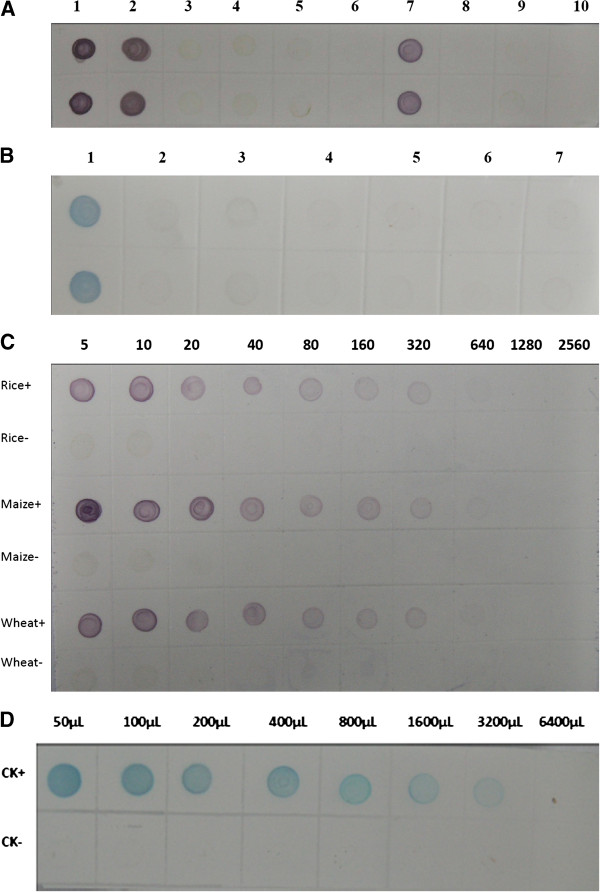Figure 4.

Specificity (A, B) and sensitivity (C, D) analyses of the dot-ELISA. A: Specificity of the dot-ELISA for detecting RBSDV in plants. 2, 3, 4, 5 and 6 were rice plants infected with RBSDV, SRBSDV, RSV, RRSV and RDV, respectively; 1 and 7 were RBSDV-infected maize and wheat plants, respectively. 8, 9 and 10 were the healthy rice, wheat and maize, respectively. Up and down dots of the membrane represented repeats of the same sample. B: Specificity of the dot-ELISA for detecting RBSDV in insect vectors. 1, 2 and 3 were RBSDV-, RSV-infected and non-viruliferous small brown planthoppers, respectively. 4 and 5 were SRBSDV-infected and non-viruliferous white backed planthoppers, respectively. 6 and 7 were a RRSV-infected brown planthopper and a RDV-infected leafhopper, respectively. Up and down dots of the membrane represented repeats of the same sample. C: Sensitivity analyses of the dot-ELISA for detecting RBSDV in infected plants. Lanes Rice+, Maize+ and Wheat+ were RBSDV-infected rice, maize and wheat plants, respectively. Lanes Rice-, Maize- and Wheat- were healthy rice, maize and wheat plants, respectively. Crude extracts from a RBSDV-infected plant and a healthy plant were serial two-fold diluted in 0.01 mol L-1 PBS from 1:5 to 1:2560 (w/v, g mL-1). D: Sensitivity analyses of the dot-ELISA for detecting RBSDV in viruliferous planthopper sample. CK+ and CK- were a viruliferous and a non-viruliferous planthoppers, respectively. Crude extracts from a RBSDV-infected small brown planthopper (CK+) and a non-viruliferous planthopper (CK-) were serial two-fold diluted in 0.01 mol L-1 PBS from 1:50 to 1:6400 (individual planthopper/μL).
